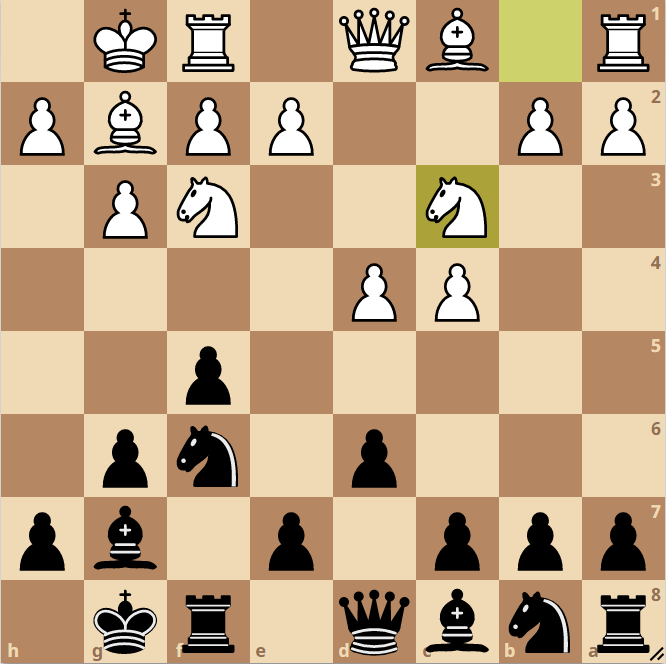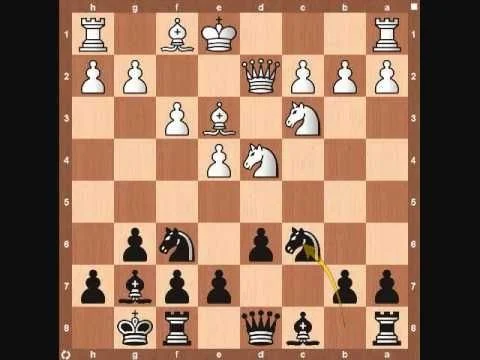Great Black Openings: The Best Chess Defences to Destroy Strong Openings
The Best Chess Openings for Black: Destroy Strong Openings Every Time With Our Top Chess Defences!
Sometimes chess is about being aggressive - and sometimes it’s about defending your pieces.
These are 5 of the best openings for black and can be used to take down some of the most powerful openings for White.
The Dutch Defence, one of the best chess defences for Black. Picture credits: The Chess World
Chess is a game that’s as complicated as it is fun.
This leads to the obsession with the game that we see among grandmasters. It’s not enough to know the first couple of moves, rather, grandmasters spend their lives learning variations that are 10 or 20 moves long out of the opening.
We’ve already looked at some aggressive chess openings, but these are our 5 best chess defences for Black.
5. Benoni Defence
This is a great option for players against d4
Black tries to use the queenside pawn majority to push for victory
This can transpose to the Banko Gambit
The Benoni Defence is a great option for players against d4. The Queen’s Gambit is a more common response, but the Benoni challenges some traditional opening ideas.
Black willingly gives up space after 1.d4 Nf6 2.c4 c5 3.d5, but will play an early e6, trade on d5, and try to use the queenside pawn majority to push for victory.
Black could also transpose to the Benko Gambit by playing b5 after d5. This is one of the few gambits which has seen play by Grandmasters in recent years during classical games.
After White takes on b5, Black can play a6, sacrificing another pawn for open lines on the queenside and incredible activity.
4. Dutch Defence
This defence is preferred by grandmasters
This is similar to the Sicilian Defence
Research this move if you’re a chess beginner as it can be tricky
The Dutch Defence is another response to d4 that is preferred by high-level chess players. In a lot of ways, the Dutch plays like a more dangerous Sicilian.
Black responds to d4 with f5, planning to develop the knight to f6 and fight for control of the e4 square. Chess beginners may run into trouble with these lines, so it’s good to do some research with an opening explorer.
For example, White can transpose to the Staunton Gambit by playing an immediate e4 after d4 f5, where White will give up a pawn for quick development and target the weak f7 diagonal.
In a normal Dutch game, Black hopes to eventually castle Kingside, take on e4 with the f pawn, and open up lines for White’s rook now on the f-file.
If Black can get out of the opening unscathed, they should have a relatively equal game with good activity.
3. Horwitz Defence
This is a relatively unknown opening rarely seen in grandmaster games
Black openly gives up central control in exchange for information about White’s strategy
A useful defence in Blitz and Bullet
The Horwitz Defence is a relatively unknown opening. Despite its simplicity and ease of play, it’s rarely seen in grandmaster games.
Black openly gives up central control in exchange for more information about White’s plan. After d4, Black plays e6, opening up diagonals for the queen and bishop and preparing pawn breaks with either d5 or f5.
Black can also play Nf6 next move and look to transpose to an Indian Defence if White plays c4.
While players don’t often use this opening in classical games, it’s more useful in Blitz and Bullet, where a quick first couple of moves can have more value than a few moves that are perfectly optimised to gain space or fight for control.
2. Indian Defence
The theory for Indian Defence games can last 15 or 20 moves
Black will often play for central control
Named after the Indian player Moheschunder Bannerjee
The Indian Defence has long been considered one of the strongest openings for Black.
Unlike a lot of the other openings on this list, the theory for Indian Defence games can last 15 or 20 moves.
Furthermore, these games often become long positional battles, which can make them a good choice for certain types of players.
The Indian Defence starts 1. d4 Nf6 and usually continues with 2. c4 e6. While c4 is a common choice for White, Black has many choices after that move.
Black can play g6, transposing to a King’s Indian, or after e6 Nc3, Black can play Bb4, the Nimzo-Indian, a favourite of grandmasters today.
In this line, Black will often trade the bishop for the knight and play for central control and to target White’s doubled pawns.
1. The Sicilian Dragon
The undisputed number one defence!
White often castles on queenside or Black castles on kingside
Grandmasters often play a Najdorf Sicilian
For a list of best defences to destroy strong openings, our number one spot couldn’t be anything but a Sicilian.
The Sicilian technically starts after just 1. e4 c5, but most people know the Sicilian as 1. e4 c5 2. Nf3 Nc6 (or d6) 3. d4 cxd4 4. Nxd4. With this series of moves, Black has forced a dynamic position, where both sides are playing for vastly different goals after just 4 moves.
White will now try to use their open lines and strong development to start an attack on the Black King.
Black, on the other hand, will try to use the central pawn majority (gained after trading the f pawn for the e pawn) to win a slow positional game in the middle.
The Sicilian Dragon defence in action
Sometimes, White will castle queenside in these games and Black will castle kingside, leading to a pawn storm for both sides.
Grandmasters often play a Najdorf Sicilian, where after trading on d4, Black plays a6, stopping any minor piece moves to b5 and preparing to push b5 and eventually b4 to push the c3 knight away from the d4-e5 squares.
For these reasons, this is the best opening for Black that counters White’s strong e4 push for central control.
Even grandmasters know, if you’re in a situation where you have to play Black and win, while other openings may more easily secure a draw, nothing brings the fighting power like a Sicilian Dragon.
Honorable Mentions
French Defence
This opening barely makes the list, frankly. Most chess players despise the French Defence. We hate playing it, we hate playing against it.
There’s one variation, however, that remains popular in grandmaster play: The Winawar Advance Variation.
This variation of the French defence, which occurs after 1. e4 e6 2. d4 d5 3. Nc3 Bb4 4. e5, is considered one of the only lines that can achieve equality or counterplay for Black.
For newer players, other lines of the French Defence can be useful, especially if the opponent is working without any theory, but for the most part, this old defence is only good if you plan on pinning the knight and eventually playing c4, creating an exciting game with lots of tension in the centre.
Queen’s Gambit
This is one of the most popular openings for Black at every level. After 1. d4 d5 2. c4, Black has a choice: to either take the pawn, going into the Queen’s Gambit Accepted or leave the tension and play a Queen’s Gambit Declined.
Most grandmasters today will leave the tension and look for opportunities to transpose to better openings if it arises, however, both lines are still played at the top level.
What’s your favourite opening for Black? Tell us in the comments.


